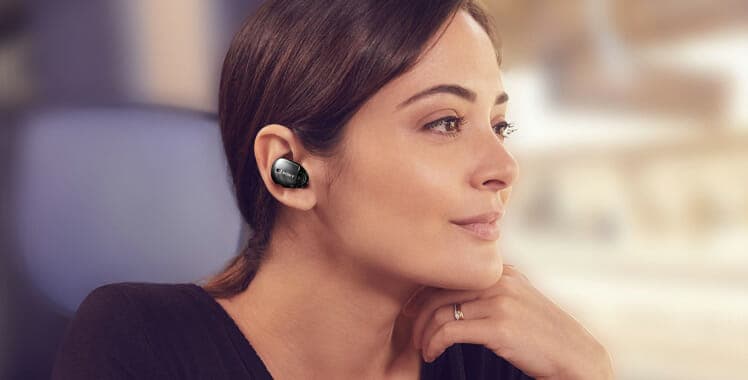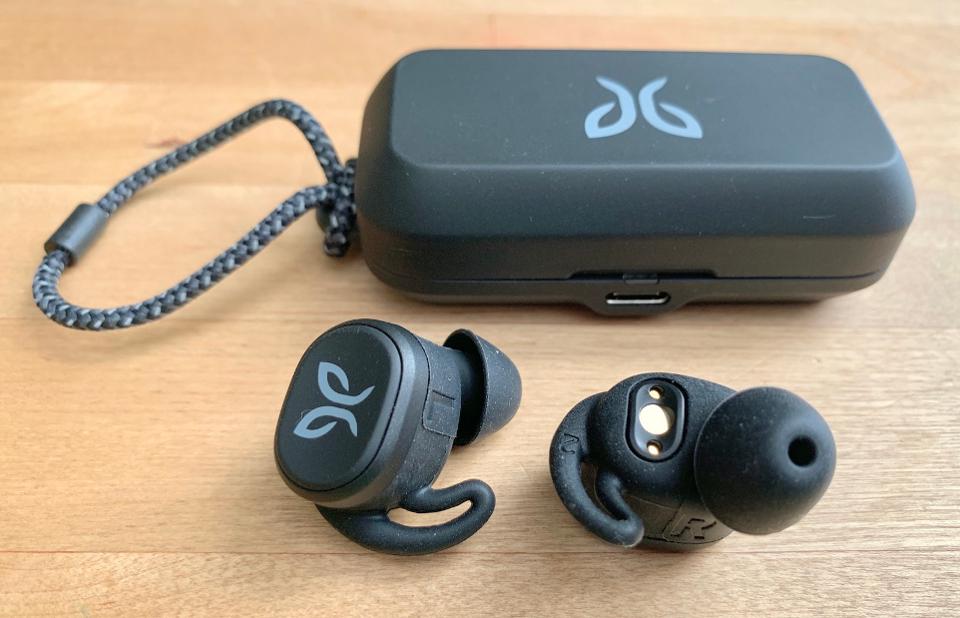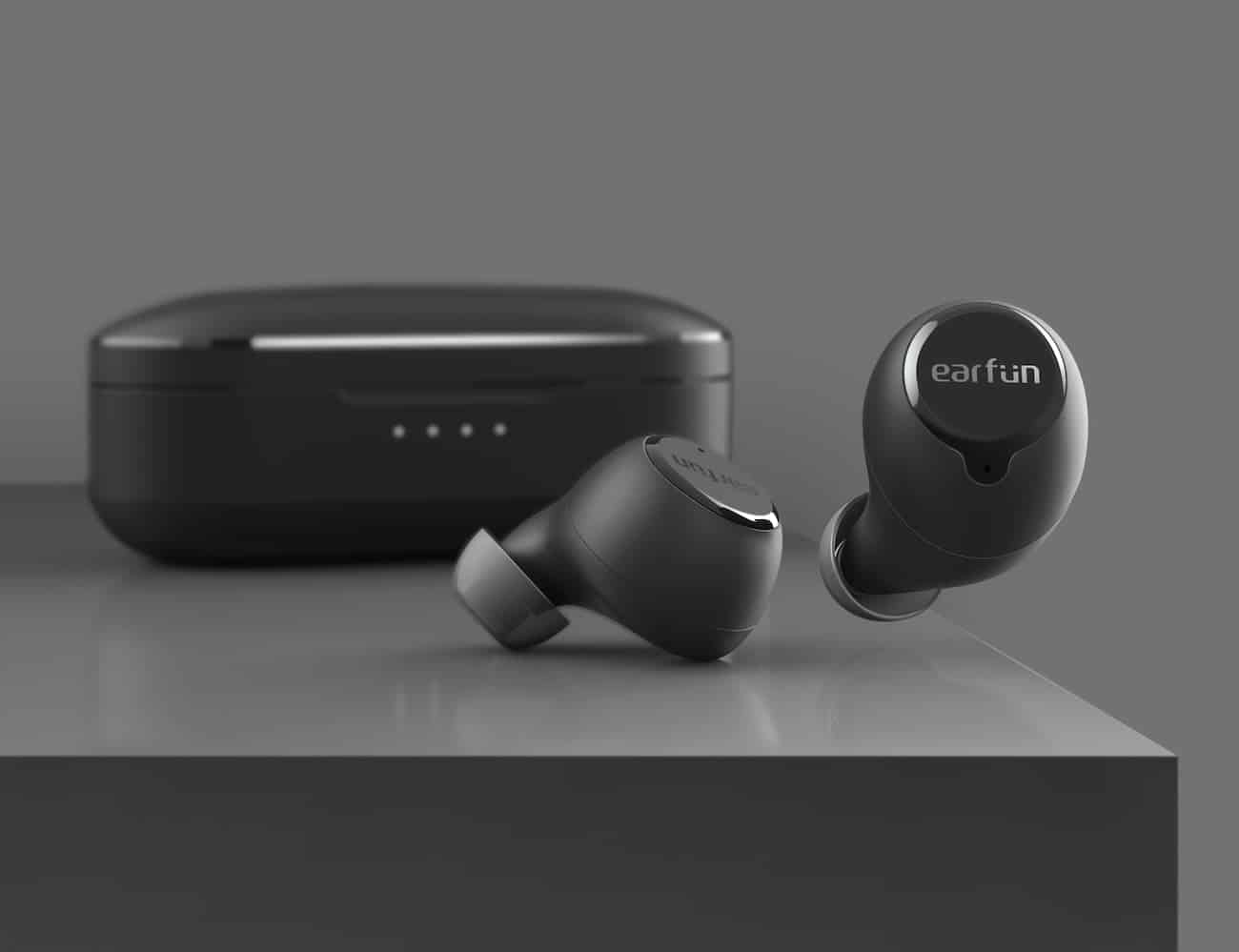If we are talking numbers, Apple’s AirPods are surely number one in the true wireless earbuds market. However, new models have been launched and they are proper value for money when it comes to sound battery life and performance. Want to know about them? Check out our list of 7 Best True Wireless Earbuds:
1. Sony WF-1000XM3:

Unlike the SoundSport Wireless, these Sonys are very wireless. It does not come with a cable, but you can expect 2 earbuds that will get the job done. Its fresh Bluetooth chip aids music synchronization and the noise-cancellation you get here is highly commendable. It sounds brilliant, clear and will perform beyond your expectations.
2. Apple AirPods Pro:
They might not sound as you would want for its very high price, but it is still an effective wireless earphone to purchase.
Must Read: 5 AirPods Pro Tips To Try With Your New Earbuds
Its design, fit, enhanced bass, effective noise-canceling, and brilliant call quality are some of the reasons why it is an option to consider. However, it degrades over time and is not replaceable.
3. Jabra Elite 75t:
It is an upgrade of the highly popular Elite 65t. This earbud is smaller in size, has a better battery life and comes with USB-C charging.
Must Read: 5 Best Wireless Earbuds And Headphones For Making Phone calls
It also possesses a charging case design with magnets to make it simpler to open and close and to keep the buds inside. It might not be as convenient to wear as the AirPods Pro and it might not come with active noise canceling, but it sounds better and has a doper bass definition.
4. Jaybird Vista:

The earbud lasts 6 hours on just one charge and it will last long enough to keep you company during your ride and trainer session. They come totally sealed off from moisture and dust, so you do not have to worry about that.
Must Read: 7 Best Workout Headphones
It comes with a fresh Bluetooth chip which helps to enhance connectivity. Even if some wireless earbuds cut out when used with a phone in your jersey pocket, the Jaybird Vista does not have that problem.
5. Libratone Track Air Plus:

Its sound is not as great as the AirPods Pro, but the audio is sharper and its bass is well defined since you can select between neutral, bass boost and treble settings in the companion application. The noise-canceling feature is applaudable as well and it fits nicely. It also comes with a case that is larger than the AirPods Pro’s case.
6. Anker Soundcore Liberty Air 2:
If you are working with a budget, then this is a good alternative and it is super useful for making phone calls. It helps to muffle ambient noise and anyone calling will still be able to hear you clearly even when you are in a very noisy environment. It might not come with a noise-canceling feature but its sound is almost as good. It can be bought for just $100.
7. EarFun Free:

With features like Bluetooth 5.0, both USB-C and wireless charging and fully waterproof (IPX7), you should own one. They do not sound amazing but the sound you get is decent enough to get the job done. The clarity you get in more expensive options is not available here but its bass is very effective. They are great for making phone calls too and they cost just $50.
More Information On Earbuds
Headphones (or head-phones in the early days of telephony and radio) traditionally refer to a pair of small loudspeaker drivers worn on or around the head over a user’s ears.
They are electroacoustic transducers, which convert an electrical signal to a corresponding sound. Headphones let a single user listen to an audio source privately, in contrast to a loudspeaker, which emits sound into the open air for anyone nearby to hear.
Headphones are also known as earspeakers, earphones or, colloquially, cans. Circumaural (‘around the ear’) and supra-aural (‘over the ear’) headphones use a band over the top of the head to hold the speakers in place.
Another type, known as earbuds or earpieces consists of individual units that plug into the user’s ear canal.
A third type are bone conduction headphones, which typically wrap around the back of the head and rest in front of the ear canal, leaving the ear canal open. In the context of telecommunication, a headset is a combination of headphones and microphones.
Headphones connect to a signal source such as an audio amplifier, radio, CD player, portable media player, mobile phone, video game console, or electronic musical instrument, either directly using a cord, or using wireless technology such as Bluetooth, DECT or FM radio.
The first headphones were developed in the late 19th century for use by telephone operators, to keep their hands free.
Initially the audio quality was mediocre and a step forward was the invention of high fidelity headphones.
Headphones originated from the telephone receiver earpiece, and were the only way to listen to electrical audio signals before amplifiers were developed.
The first truly successful set was developed in 1910 by Nathaniel Baldwin, who made them by hand in his kitchen and sold them to the United States Navy.
Headphone size can affect the balance between fidelity and portability. Generally, headphone form factors can be divided into four separate categories: circumaural (over-ear), supra-aural (on-ear), earbud and in-ear.
There you have it – a comprehensive list of 7 best true wireless true earbuds. If you have any personal favorites or other recommendations, feel free to drop them in the comment section below.



